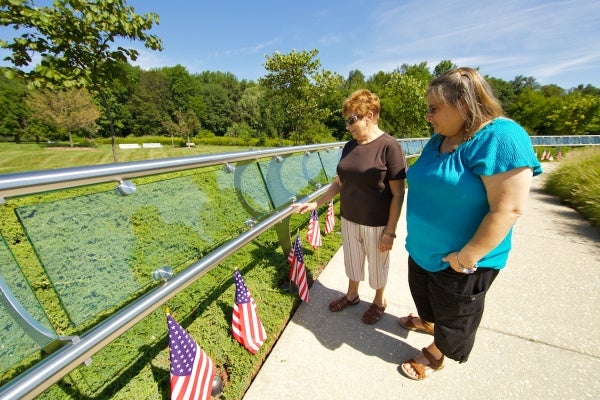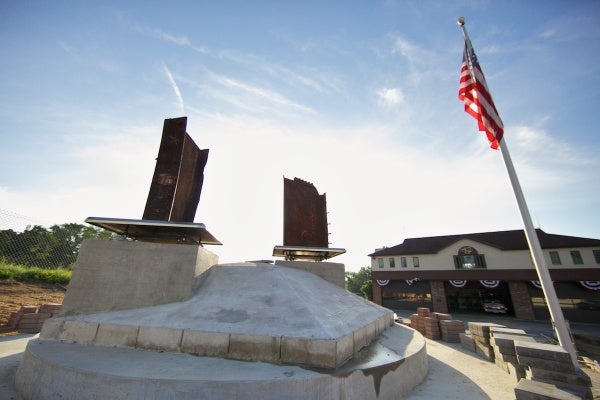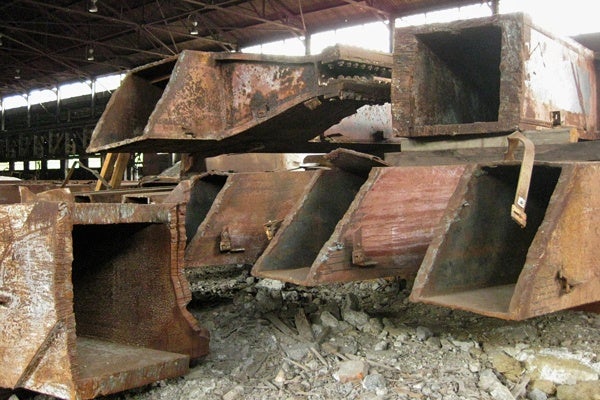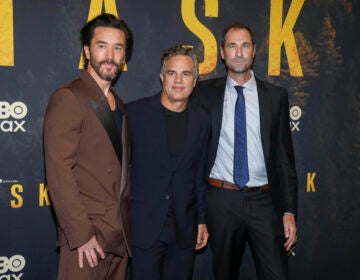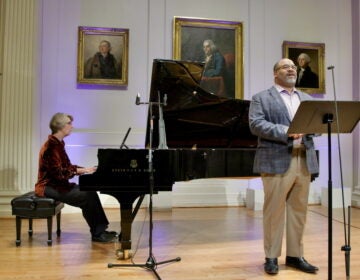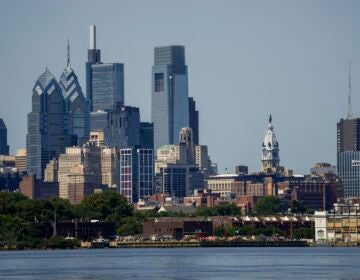Steel ‘trees’ from World Trade Center return to Coatesville
Two years ago, the Port Authority of New York and New Jersey began distributing pieces of the World Trade Center around the country. Several dozen of those pieces are beginning to surface in Sept. 11 memorials in the region.
Two years ago, the Port Authority of New York and New Jersey began distributing pieces of the World Trade Center around the country.
Several dozen of those pieces are beginning to surface in Sept. 11 memorials in the region. The volunteer fire station in Cochranville, Pa., for instance, received a small slice of a steel I-beam, about 21 inches by 25 inches.
“Looks like a piece of floor. There was a piece of concrete on it, which leads me to believe it was a floor beam,” said volunteer firefighter Dennis Kennan. “You can see how it was deformed when the World Trade Center fell.”
The piece will be incorporated into Cochranville’s existing firefighter memorial.
About 10 miles west of Cochranville is Coatesville, an only slightly larger town that received the lion’s share of memorial steel–hundreds of tons of it. Coatesville was the home of Lukens Steel, a now-defunct steel company, which manufactured much of the steel used in the World Trade Center.
Last year, 20 support columns salvaged from the WTC wreckage were trucked back to Coatesville. The columns are called “trees.” Looking like upright forks with three tines, they absorbed the incredible weight of 110 floors above them.
The caretaker of the memorial steel is Scott Huston, director of the Greystone Society, a nonprofit venture trying to create a museum dedicated to the American steel industry in Coatesville.
‘Trees’ withstood collapse
Standing inside a massive shed that used to be the Lukens plant, Huston explained how carefully the company made the steel “trees.”
“This is where these buildings were held up,” Huston said. “That’s why these pieces still stood. After 9/11 they were still standing. It’s high-quality steel. It’s something to be proud of.”
This steel left the Coatesville plant in 1968. It wasn’t supposed to come back. Now, inside the enormous warehouse, 20 support columns lie horizontally as though it were the site of a wake.
On Sunday, a few “trees” will be hauled outside so people can see them and—more importantly—touch them.
“When they are able to touch it, it becomes real. It’s a moment,” said Huston. “That’s what it’s all about—remembering. Because this happened. I’m in the middle of the first floor here. In Coatesville. It’s supposed to be in New York.”
If these columns were upright, they would partially re-create the northeast corner of the north tower lobby. That is how Huston plans to display this steel, so that visitors will be able to walk between the columns just like people who worked in the World Trade Center would every day on their way to their offices.
If Huston is able to raise enough money for the Coatesville memorial, it will be one of the largest in the country.
Smaller tributes
In much smaller ways, the World Trade Center is being remembered almost everywhere.
On the other side of Coatesville, about 10 miles to the east, Downingtown High School West received a 3-foot steel bar.
“It’s rusted, and it’s bent,” said social studies teacher Daniel Solar, hefting the twisted steel. “It’s surprisingly heavy.”
Two years ago, one of Solar’s students—Katie Artus—applied to the Port Authority of New York and New Jersey for a piece of the World Trade Center. Although the high school has no direct connection with the attacks of 9/11, Artus persevered through a glacial application process.
Upon approval, Solar took Artus and the rest of his class on a field trip to New York to pick up the piece, and scout out how other organizations displayed their piece of history.
“We saw three memorials in three parts of New York,” said Solar, describing granite reflecting pools with embedded crystals in corporate lobbies of Manhattan. “They were done by MasterCard—or some major company with lots of resources. We thought maybe a high school could do something.”
What they came up with is modest but heartfelt. In a small nook of the high school lobby—where there used to be a pay phone—that twisted bar will be suspended from wires, as though it were floating or suspended in freefall. A poem called “September Martyrs” by 16-year-old Elyse Mark will be painted on the wall behind it.
And from the sooted night we rose,
like flaming phoenix of ancient lore.
America
whose thousand hearts pulsed with life
as many
as one
once more.
Elyse was just 7 years old in 2001. Most of what she remembers from 9/11 was being sent home early from first grade.
The incoming freshmen at Downingtown High School West were about 4 years old in 2001. Many have no memory of that day when the planes flew into the World Trade Center.
Every day, Solar says, about 1,800 kids will pass by the twisted bar.
“If that’s the only way these students over the next 10, 15 years will be reminded about this event in 2001,” said Solar, “at least they’ll have something to remind them about it.”
WHYY is your source for fact-based, in-depth journalism and information. As a nonprofit organization, we rely on financial support from readers like you. Please give today.





